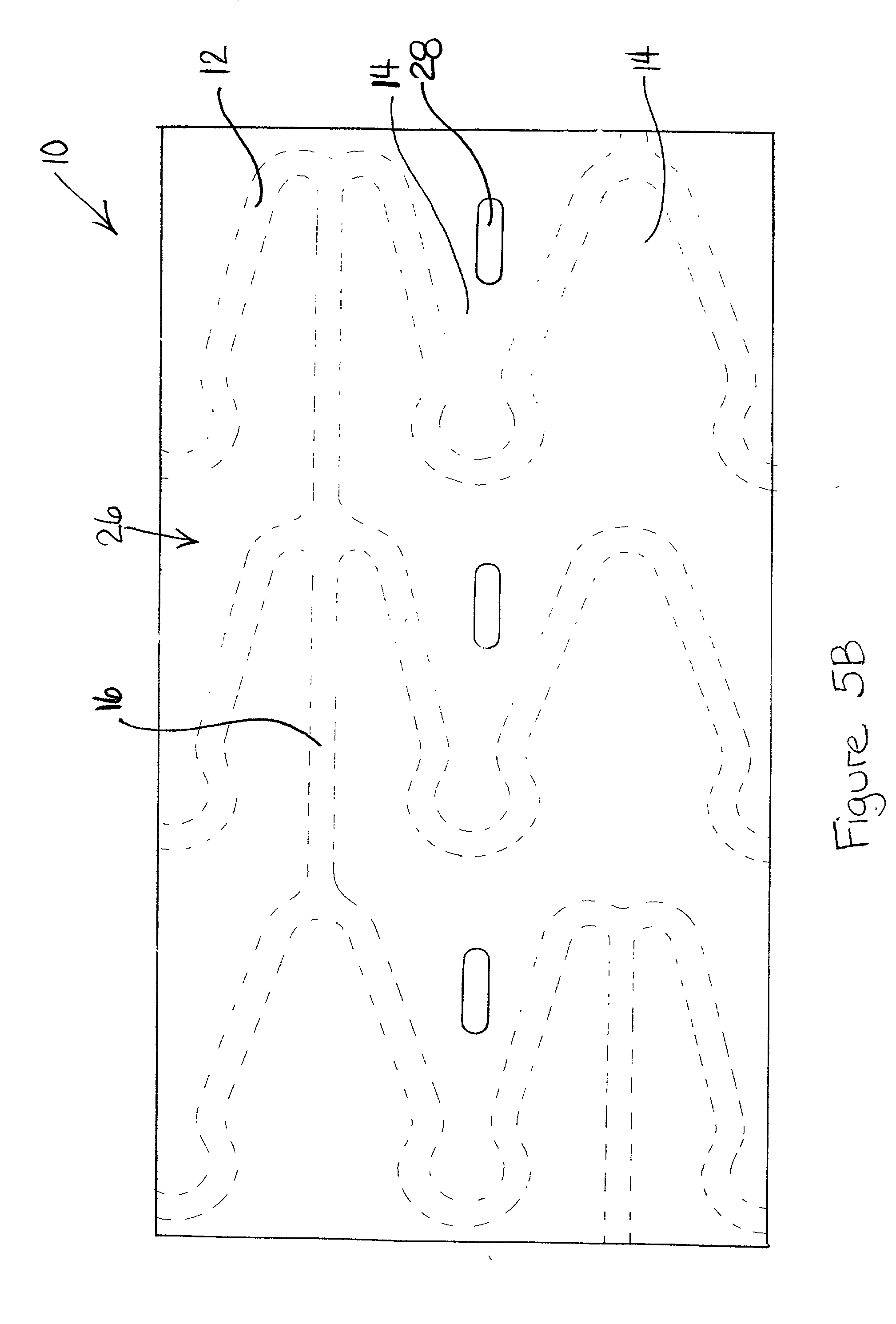Methods of forming a coating for a prosthesis
a coating and prosthesis technology, applied in the direction of catheters, packaged goods, foodstuffs, etc., can solve the problems of occlusion of the conduit, intimal flaps or torn arterial linings, and threatening the closure of the vessel
- Summary
- Abstract
- Description
- Claims
- Application Information
AI Technical Summary
Benefits of technology
Problems solved by technology
Method used
Image
Examples
Embodiment Construction
[0021] Some of the various embodiments of the present invention are illustrated by FIGS. 1-6. The Figures have not been drawn to scale, and the size of the various regions have been over or under emphasized for illustrative purposes.
Examples of the Prosthesis
[0022] The device or prosthesis used in conjunction with the compositions described below may be any suitable device used for the release of an active ingredient or for the incorporation of radiopaque or radioactive materials, examples of which include self-expandable stents, balloon-expandable stents, grafts, and stent-grafts. Referring to FIG. 1, a body of a stent 10 is formed from a plurality of struts 12. Struts 12 are separated by gaps 14 and may be interconnected by connecting elements 16. Struts 12 can be connected in any suitable configuration and pattern. Stent 10 is illustrated having an outer surface (tissue-contacting surface) and an inner surface. A hollow, central bore 18 extends longitudinally from a first end 20 ...
PUM
| Property | Measurement | Unit |
|---|---|---|
| Temperature | aaaaa | aaaaa |
| Thickness | aaaaa | aaaaa |
| Size | aaaaa | aaaaa |
Abstract
Description
Claims
Application Information
 Login to View More
Login to View More - R&D
- Intellectual Property
- Life Sciences
- Materials
- Tech Scout
- Unparalleled Data Quality
- Higher Quality Content
- 60% Fewer Hallucinations
Browse by: Latest US Patents, China's latest patents, Technical Efficacy Thesaurus, Application Domain, Technology Topic, Popular Technical Reports.
© 2025 PatSnap. All rights reserved.Legal|Privacy policy|Modern Slavery Act Transparency Statement|Sitemap|About US| Contact US: help@patsnap.com



